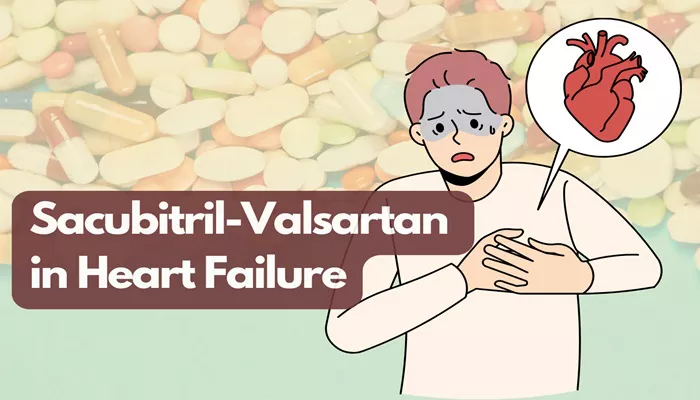Heart failure (HF) is a complex clinical syndrome that arises from various cardiac conditions, leading to the heart’s inability to pump sufficient blood to meet the body’s needs. This condition significantly affects the quality of life and is associated with high morbidity and mortality rates. Among the various treatment options available for heart failure, valsartan, an angiotensin II receptor blocker (ARB), has emerged as a crucial therapeutic agent. This article explores how valsartan can help treat heart failure, detailing its mechanisms of action, clinical benefits, and role in patient management.
Heart failure can result from various underlying conditions, including coronary artery disease, hypertension, and previous myocardial infarction (heart attack). Symptoms of heart failure include shortness of breath, fatigue, fluid retention, and reduced exercise tolerance.
The Role of The Renin-Angiotensin-Aldosterone System (RAAS)
The renin-angiotensin-aldosterone system (RAAS) plays a critical role in regulating blood pressure and fluid balance. In heart failure, the activation of RAAS leads to increased levels of angiotensin II, which causes:
Vasoconstriction: Narrowing of blood vessels, increasing blood pressure and workload on the heart.
Sodium and Water Retention: This leads to fluid overload, worsening heart failure symptoms.
Myocardial Remodeling: Angiotensin II promotes hypertrophy and fibrosis of cardiac tissue, contributing to the progression of heart failure.
Given the detrimental effects of angiotensin II, targeting this pathway is a key strategy in heart failure management.
Valsartan: Mechanism of Action
Valsartan is an ARB that selectively blocks the angiotensin II type 1 (AT1) receptor. By inhibiting this receptor, valsartan exerts several beneficial effects:
Vasodilation: Valsartan relaxes blood vessels, reducing systemic vascular resistance and lowering blood pressure. This decreases the workload on the heart.
Decreased Aldosterone Secretion: By blocking angiotensin II, valsartan reduces aldosterone levels, leading to decreased sodium and water retention. This helps alleviate fluid overload in heart failure patients.
Improved Cardiac Function: Valsartan can enhance left ventricular function by reducing afterload (the resistance the heart must overcome to eject blood) and preventing myocardial remodeling.
SEE ALSO: What Are The Signs of End-of-Life Congestive Heart Failure?
Clinical Evidence Supporting Valsartan in Heart Failure
Numerous clinical trials have evaluated the efficacy of valsartan in patients with heart failure. The most significant studies include:
1. VALIANT Trial
The VALIANT (Valsartan in Acute Myocardial Infarction) trial assessed the effects of valsartan in patients with left ventricular dysfunction following myocardial infarction. The trial demonstrated that valsartan was non-inferior to captopril, an ACE inhibitor, in reducing cardiovascular morbidity and mortality. Patients treated with valsartan experienced fewer hospitalizations for heart failure, highlighting its effectiveness in managing heart failure post-myocardial infarction .
2. Val-HeFT Study
The Valsartan Heart Failure Trial (Val-HeFT) involved over 5,000 patients with chronic heart failure. The study found that valsartan significantly reduced the combined endpoint of mortality and morbidity by 13.2% compared to placebo.
Additionally, patients receiving valsartan showed improvements in New York Heart Association (NYHA) functional class and quality of life measures.
3. CHARM Study
The CHARM (Candesartan in Heart Failure: Assessment of Mortality and Morbidity) study also provided insights into the role of ARBs in heart failure management. Although it primarily focused on candesartan, it reinforced the benefits of ARBs like valsartan in reducing hospitalizations and improving clinical outcomes in heart failure patients.
Benefits of Valsartan in Heart Failure Management
The incorporation of valsartan into heart failure management offers several advantages:
Symptom Relief: Patients taking valsartan often report significant improvements in symptoms such as dyspnea (shortness of breath) and fatigue, enhancing their overall quality of life.
Reduced Hospitalizations: Clinical trials have consistently shown that valsartan reduces the frequency of hospitalizations due to heart failure exacerbations.
Improved Exercise Tolerance: Patients on valsartan may experience improved exercise capacity, allowing them to engage in daily activities with less discomfort.
Alternative for ACE Inhibitor Intolerance: For patients who cannot tolerate ACE inhibitors due to side effects like cough or angioedema, valsartan serves as an effective alternative without these adverse reactions.
Combination Therapy: Valsartan can be used in conjunction with other heart failure medications, such as beta-blockers and diuretics, to optimize treatment outcomes.
Dosing And Administration
The typical starting dose of valsartan for heart failure is 40 mg to 80 mg once daily, which can be titrated up to a target dose of 160 mg to 320 mg based on patient tolerance and response. It is essential to monitor blood pressure, renal function, and potassium levels during treatment to prevent complications such as hypotension and hyperkalemia.
Side Effects And Considerations
While valsartan is generally well-tolerated, some patients may experience side effects, including:
Hypotension: Low blood pressure can occur, especially when initiating therapy or increasing the dose.
Hyperkalemia: Elevated potassium levels may result from valsartan’s effects on aldosterone secretion.
Renal Impairment: Monitoring kidney function is crucial, as valsartan can affect renal perfusion in susceptible individuals.
Conclusion
Valsartan is a valuable medication in the management of heart failure, particularly for patients with reduced ejection fraction or those intolerant to ACE inhibitors. Its ability to block the harmful effects of angiotensin II leads to improved symptoms, reduced hospitalizations, and enhanced quality of life for patients.
As heart failure remains a significant public health challenge, understanding the role of valsartan and optimizing its use in clinical practice is essential for improving patient outcomes. Ongoing research and clinical trials will continue to refine our understanding of valsartan’s place in heart failure therapy, ensuring that patients receive the most effective and safe treatment options available.

